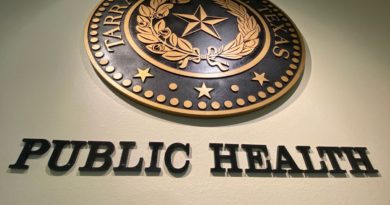Managing Glaucoma During COVID-19: Patients Point the Way to Improved Care
Healthcare is in a state of flux. As extraordinary measures are taken to stem the spread of the coronavirus, regular medical care—from routine checkups and screenings to in-office treatments and procedures—has been subject to significant disruptions and challenges. Social distancing requirements of the coronavirus 2019 (COVID-19) pandemic have created new limitations on in-person physician visits.
Office closures and safety concerns have resulted in the delay or cancelation of medical appointments for some patients. Compounding matters is the dynamic and uncertain nature of the pandemic. The issues that patients and physicians are confronting today have evolved since the COVID-19 shutdowns began in March—and further change is undoubtedly on the horizon.
Impact of COVID-19 on Glaucoma Care
For glaucoma patients and their eye care professionals, the pandemic has led to an array of stressors, given the progressive but indolent nature of a disease that can lead to blindness and requires close ongoing monitoring and treatment. The current health environment is particularly worrisome for elderly patients because they are most at risk for vision loss from glaucoma and are also among the highest risk groups for COVID-19 mortality.
To better understand the concerns and experiences of glaucoma patients during the pandemic, the Glaucoma Research Foundation (GRF) commissioned an online survey in May 2020. The aim was to gain valuable, real-time patient input that can help eye care professionals better address patients’ emotional needs as they adapt to the new, and continually changing, care requirements of COVID-19.
The GRF survey, which was supported by Aerie Pharmaceuticals, assessed patients’ confidence in their disease management during the pandemic; specific disease management concerns; patients’ experience with telemedicine; and patients’ comfort in returning to eye professionals’ offices. The survey drew a national response, with 1051 adult glaucoma patients from 49 states participating in the questionnaire.
Disease Management Concerns
The survey findings bring to light several key considerations for ophthalmology practices evolving glaucoma care in the COVID-19 environment.
Notably, the survey found that more than half of respondents (53%) had to delay and/or cancel an eye care appointment during the first months of the pandemic. These disruptions seem to have significantly impacted patients’ confidence in their disease management, with approximately one-third (36%) of glaucoma patients surveyed saying they were not confident that their disease was well-managed. Those who had the lowest confidence levels in their glaucoma management were 30% more likely to have had an eye care appointment delayed or canceled.
This feedback highlights the central role of communication in enhancing glaucoma care and the importance of nurturing the physician-patient relationship during the pandemic. With physician offices open again, personal and direct doctor-patient communication is paramount to helping patients understand their unique level of risk and rebuild confidence in their disease management.
Without scaring patients, it’s important that they understand the consequences of delaying an office visit and the real risk it may have for further, even permanent, vision loss.
At my practice in San Francisco, we went through every patient record that had an appointment during the early phase of the pandemic and conducted a risk assessment. We then communicated with each patient to make them aware of their particular situation and the risk of not coming in to be evaluated when our office reopened.
The first step was to speak with our staff about our responsibility to be safe, not just in the office, but also outside of work, with specifics about how to minimize risk. I sought their input and we developed together an action plan with new office protocols.
We also invested in an expansion of our office team. With this increased staff, we are able to directly answer more patient calls and engage in longer, in-depth conversations. In addition, we have placed a greeter at our main entrance who screens patients, which includes basic health questions, a temperature check, and a check for an appropriate mask.
After completing these safety protocols, the greeter asks patients to use hand sanitizer prior to entering the clinic. These new measures have played a valuable role in boosting our patients’ confidence in their disease management during the pandemic.
The “COVID-19 Office” and Telemedicine
The survey also reveals that glaucoma patients place high value on being able to see their physician in person. Six in 10 (63%) respondents said they are comfortable returning to their eye doctors’ offices as long as social distancing measures, such as face masks and less crowded waiting rooms, are implemented. This preference for in-person physician visits, coupled with technology challenges, make patients largely uninterested in telemedicine. A vast majority (87%) of glaucoma patients surveyed said they would rather wait six weeks for an in-person office visit than have a telemedicine visit in two weeks.
While telemedicine has been a valuable tool in other medical specialties during the pandemic, it has significant limitations for standard diagnostic procedures in glaucoma care. Since intraocular pressure (IOP) checks, visual field evaluation, and other tests cannot be easily conducted virtually, practitioners may lose considerable clinical information by trying to manage glaucoma via telemedicine.
Take care of your staff
During these unprecedented times, the safety and well-being of patients is the principal concern of all eye care professionals. It is also important to consider the needs of your staff as well. At my center, we have modified several standard procedures that not only have enhanced patient safety during COVID-19 but have also made us operate more efficiently and safely as an eye care practice.
I have found that when members of my office team feel safe at work, their calmness and confidence extend to the patient-provider relationship, helping patients feel more comfortable about the visit. By fostering a caring and professional approach to glaucoma care in the midst of uncertainty, we can all navigate the COVID-19 pandemic while continuing to protect the vision of our patients.
Andrew Iwach, MD, is Executive Director of the Glaucoma Center of San Francisco, Associate Clinical Professor of Ophthalmology at the University of California, San Francisco, and a faculty instructor at the California Pacific Medical Center Department of Ophthalmology.
The article reflects the views of the author, not necessarily those of the publication.




